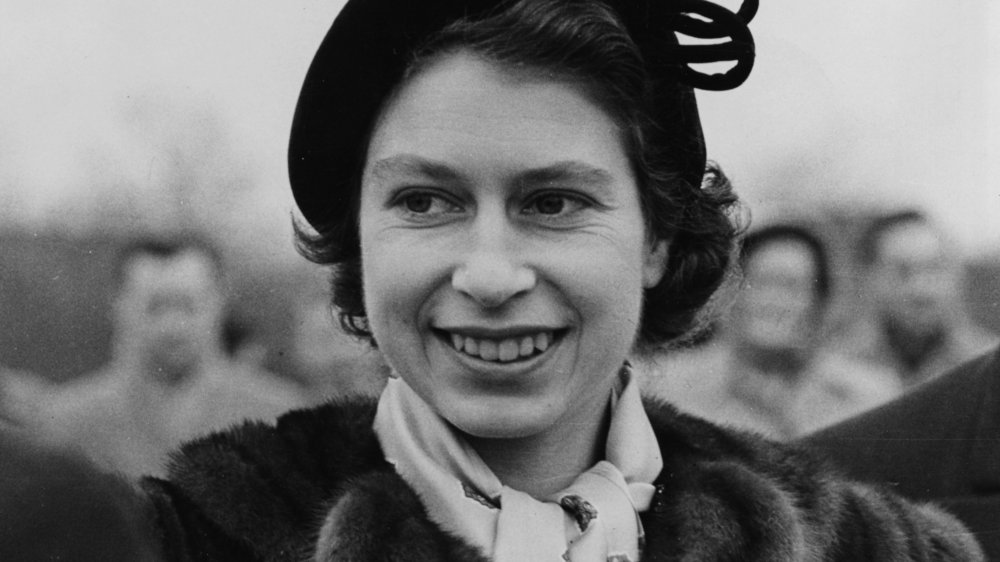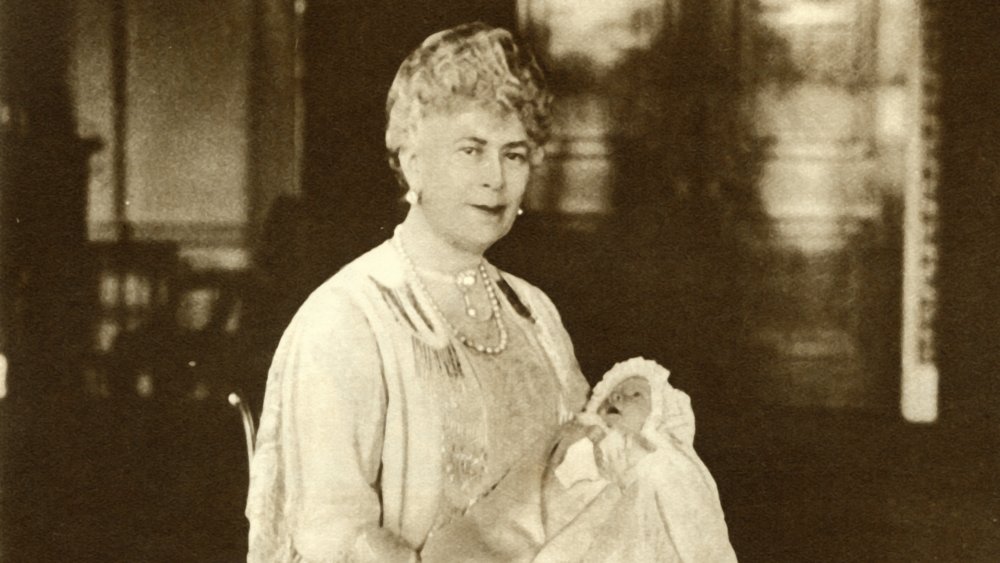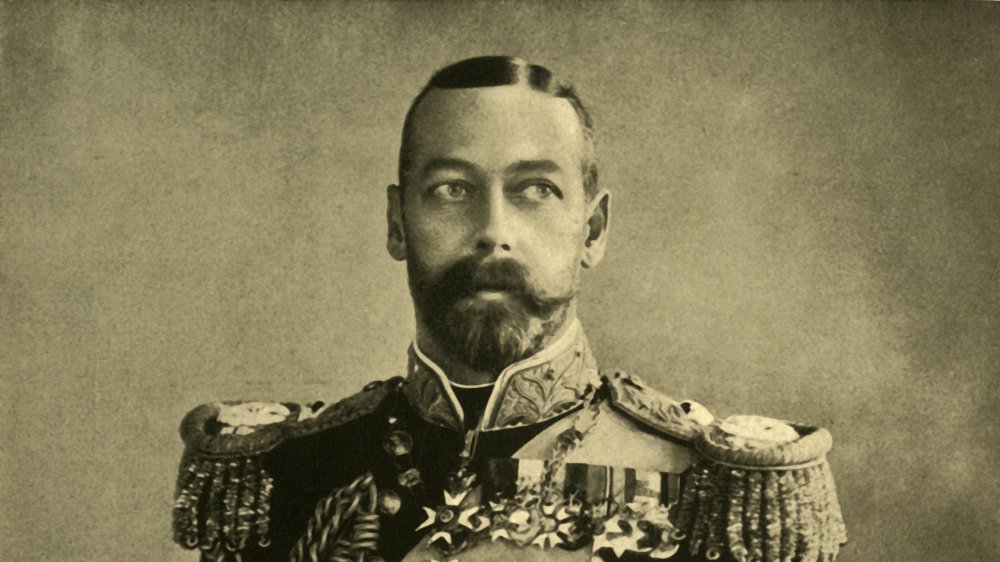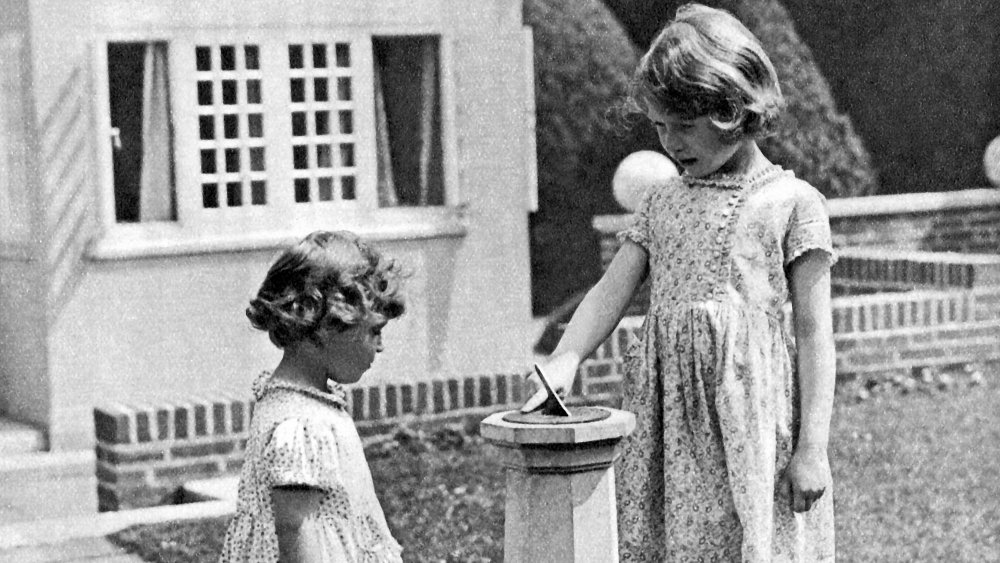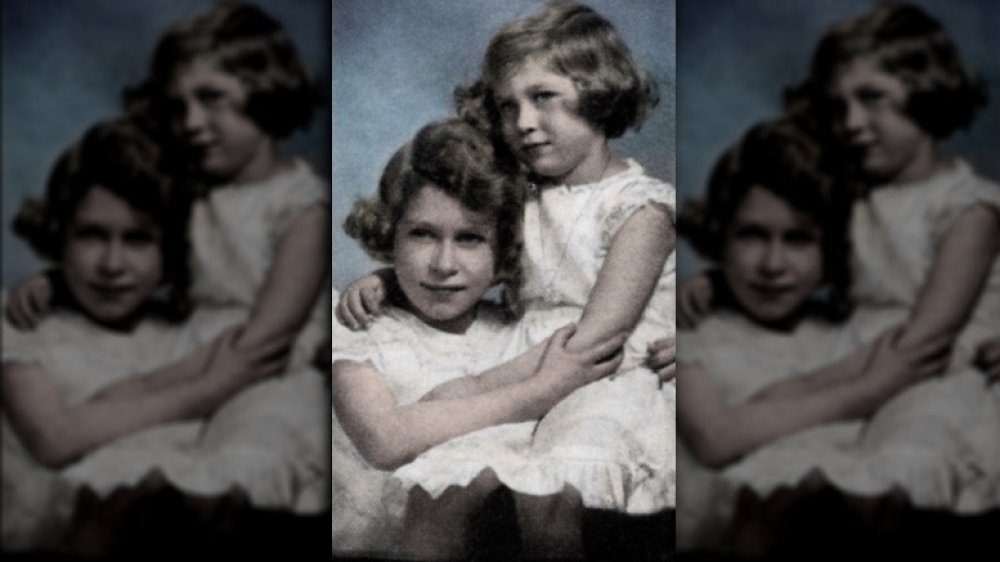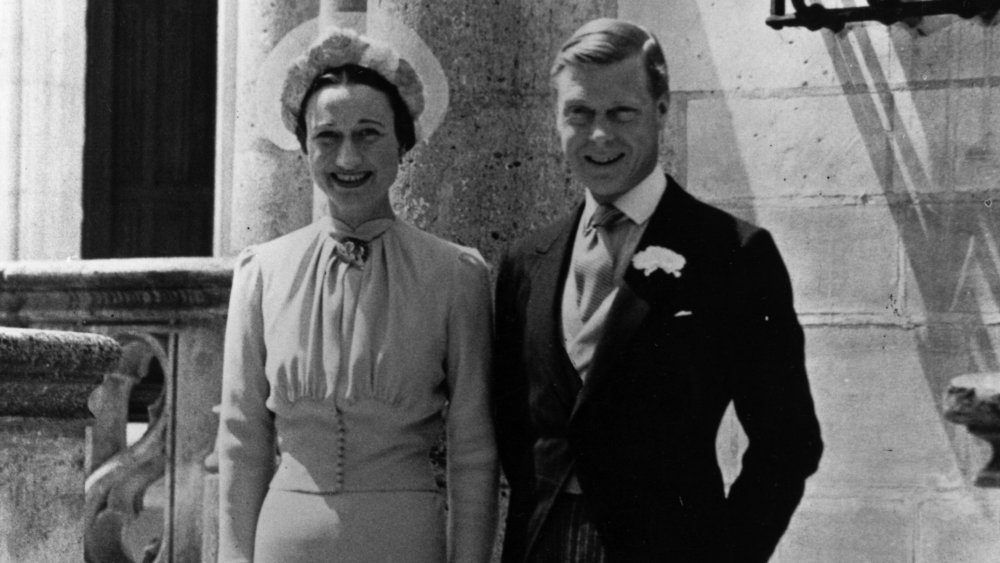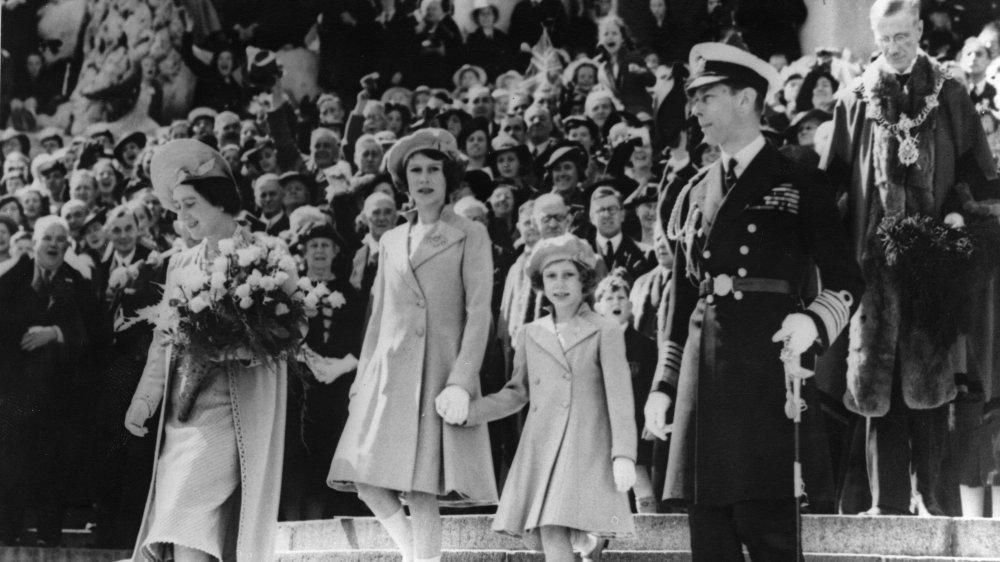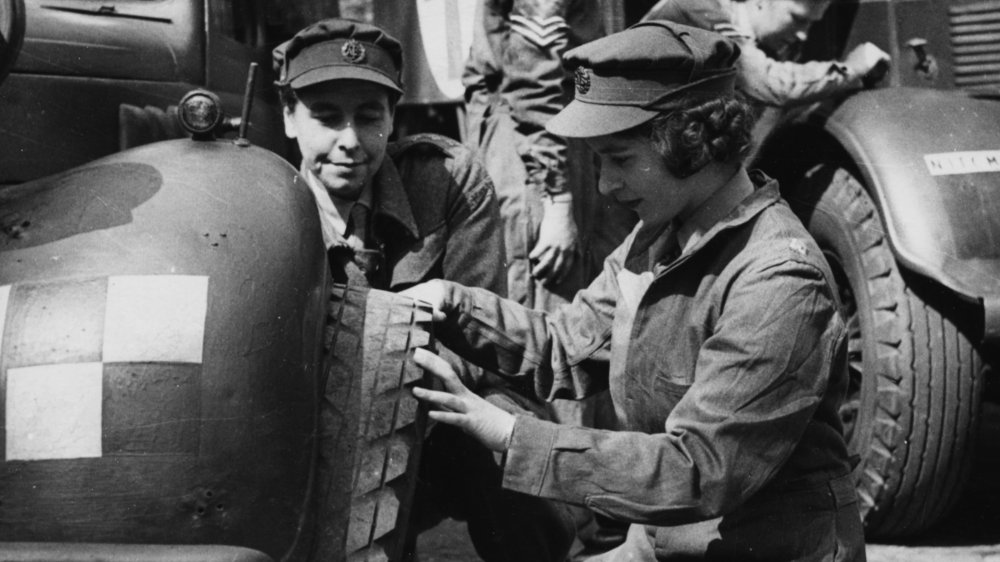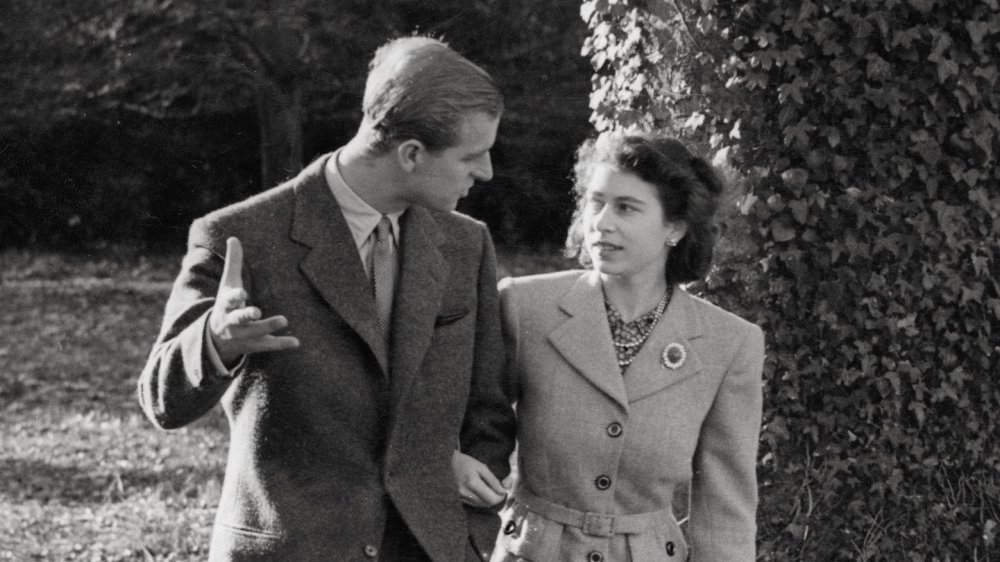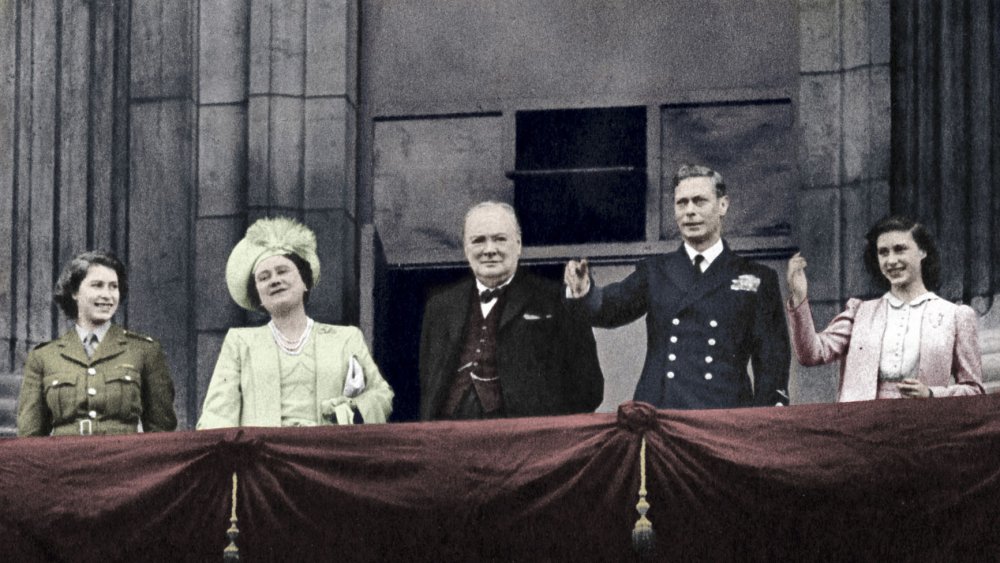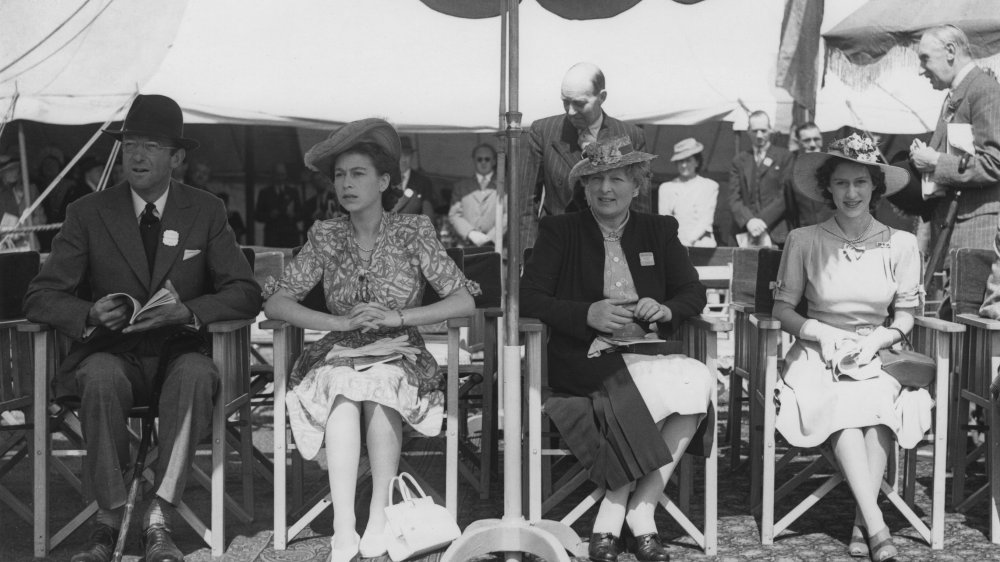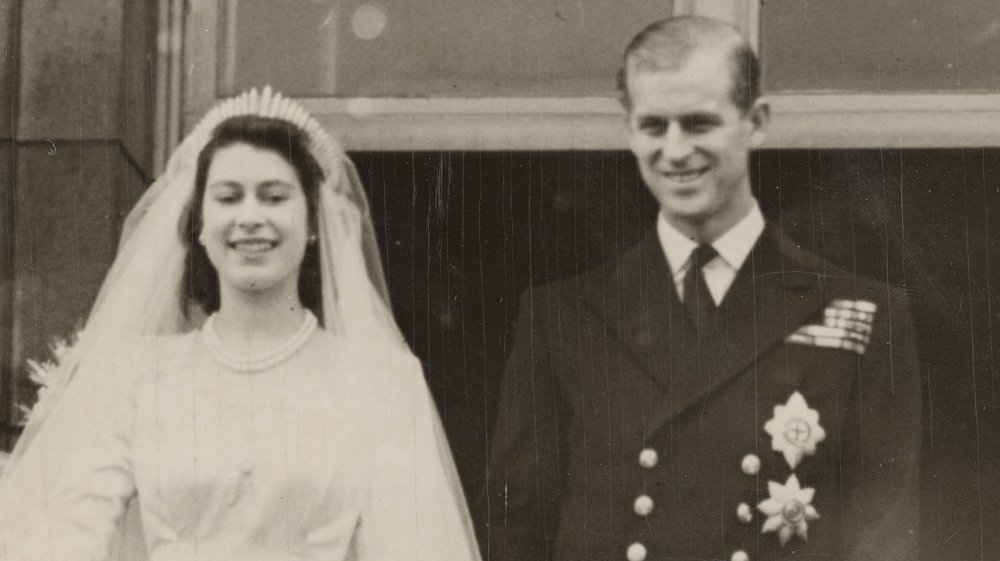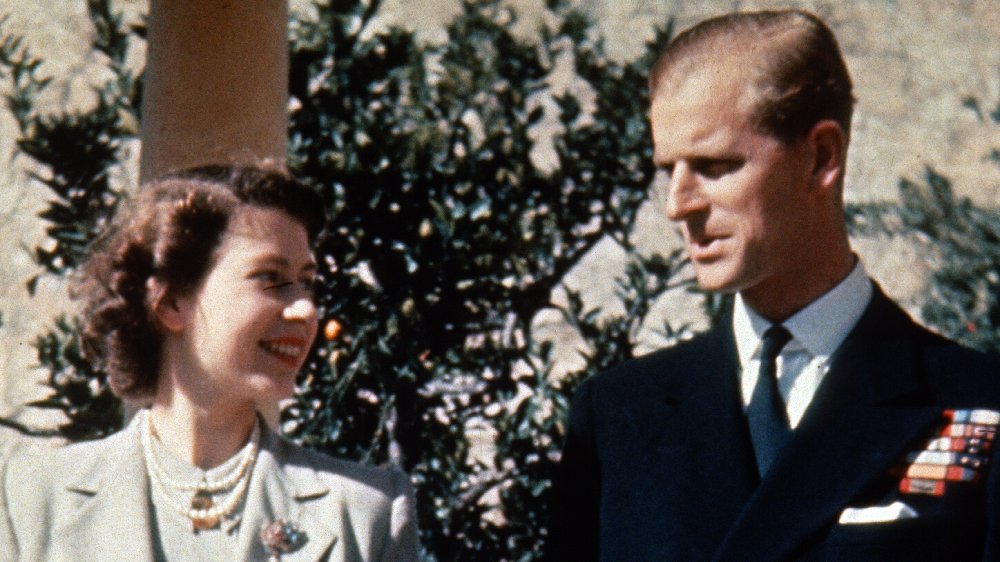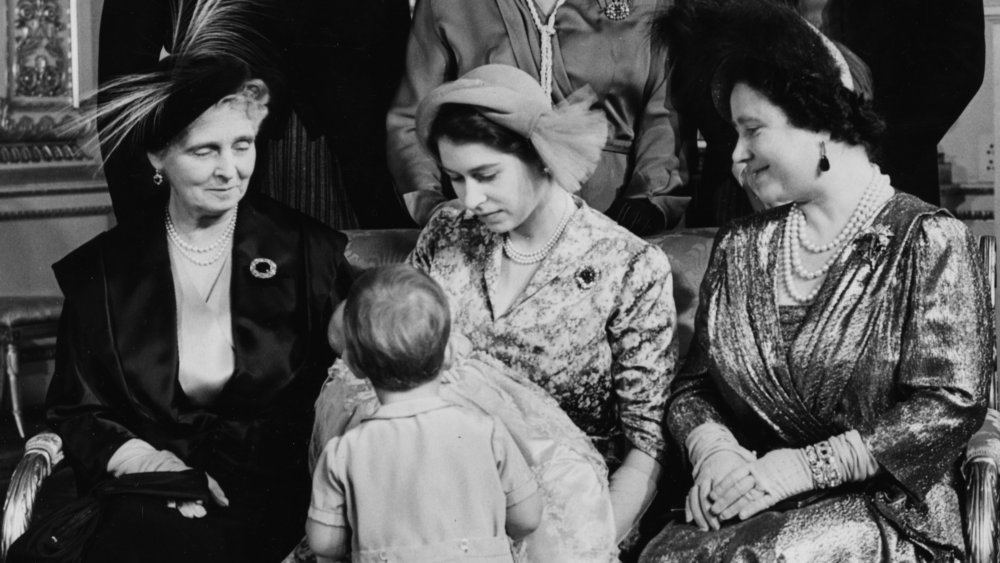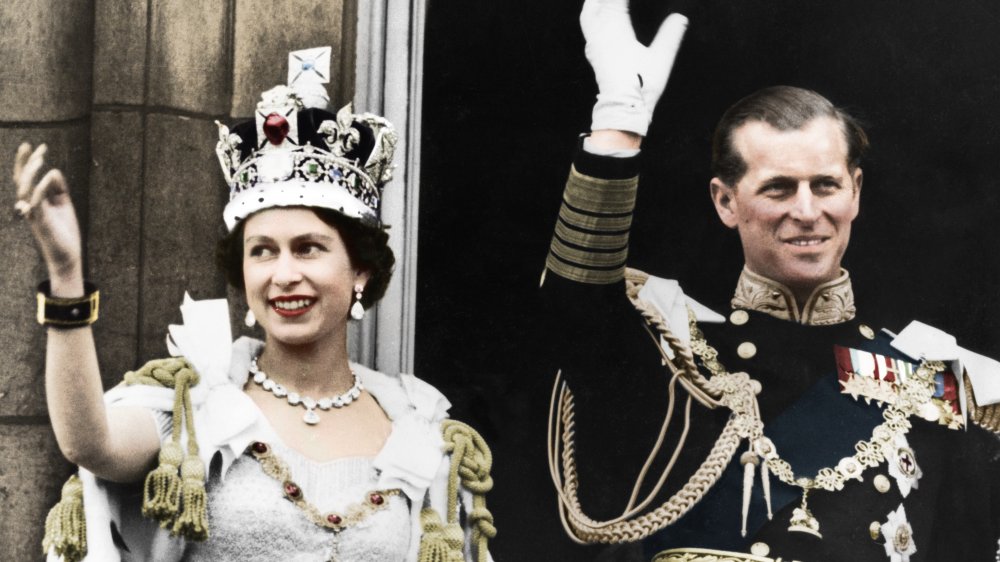The Truth About Queen Elizabeth's Life Before She Was Queen
Queen Elizabeth II's worldwide influence is undeniable. According to the royal family's website, she has been in power for a longer period of time than any other British king or queen, and she has overseen periods "of enormous social change."
Having ruled for more than 60 years, Queen Elizabeth's life since her ascension to the throne has been scrutinized by royal commentators, historians, and the media alike. Several television shows and films have been made about her unique life, including Netflix's The Crown. There is no shortage of information about the British queen, as well as the lives of her children, grandchildren, and great-grandchildren. But how much do you really know about Queen Elizabeth's life before she actually became queen?
What was her childhood like? Was she prepared for royal duty since the day she was born? How did she meet her husband? What was their wedding like? We're here to answer all of those questions and many more. This is the truth about Queen Elizabeth's life before she was queen.
Queen Elizabeth was born in 1926 amidst turmoil in Britain
Though Queen Elizabeth embodies royalty so seamlessly that it feels as if she must've been prepared for life as the queen since the day she was born, this actually isn't the case at all. According to BBC's History Extra, Princess Elizabeth Alexandra Mary Windsor was not expected to ascend the throne at all.
Britain was in turmoil at the time of her Cesarian birth (April 21, 1926) due to several concurrent events like post-war financial problems, plummeting coal prices, pressure on the mining industry, and outrage over the government's plan to reduce the wages of miners. Nevertheless, Britain's then-home secretary Sir William Joynson took time out of his busy schedule to meet the baby princess right away.
Princess Elizabeth, as she was then called, was born to the Duke and Duchess of York, and was the first grandchild of the then-reigning King George V. The princess was christened at Buckingham Palace two weeks after birth. Nevertheless, the princess was third in line to the throne at the time of her birth, so you could liken her former odds of ruling to Prince George's.
This was Queen Elizabeth's nickname for King George V
King George V, Queen Elizabeth's grandfather and the Duke of York's father, was not known to have a sunny disposition. On the contrary, 9Honey revealed that he was known as a "tyrant King" by those close to the royals. Though he projected a "pleasant image" to the world, he was described as harsh and cruel by royal commentators and those who knew him. The Duke of York even wrote him a letter stating, "I do hope that you and papa are as delighted as we are to have a granddaughter, or would you sooner have had another grandson?" upon Princess Elizabeth's birth, according to History Extra, perhaps fearing his father's disapproval.
Nevertheless, young Princess Elizabeth had no trouble getting along with her grandpa. According to History Extra, she was beloved by her grandparents, and definitely was not scared of King George V like other members of her family may have been. She apparently gave him the nickname "Grandpa England," and he was thought to be extremely affectionate towards her. She even spent a lot of time at his country home during her early years.
Queen Elizabeth's very early upbringing was posh but surprisingly normal
When we think of princesses, we might tend to also think of giant castles, moats, drawbridges, and huge parties with royal attendees. Princess Elizabeth's early years, however, couldn't have been more different.
According to History Extra, Princess Elizabeth had a relatively normal upbringing during the early years of her life — before she became the next in line for the throne. She was left at home with her nannies when her parents went overseas for a royal tour of the colonies Down Under, so she was spared the fanfare and chaos. Although she and her family did move to a giant 25-bedroom home near the beautiful Hyde Park in London, Princess Elizabeth grew up in a relatively normal home environment compared to other royals.
While other young royals might have only been able to play with young members of nobility as children, Elizabeth spent her childhood playing with the children of English white-collar workers.
Queen Elizabeth was an only child until her sister was born
Princess Elizabeth was the first child born to the Duke and Duchess of York, and she remained an only child until her sister was born a few years later. According to the royal family's website, Princess Margaret was welcomed into the world in 1930, just four years after Princess Elizabeth.
History Extra reported that although her parents initially chose the name Ann for their second daughter, King George V did not approve. Thus, she was named Margaret, and given the pet name Margot by those nearest and dearest to her. "I am glad to say that she has large blue eyes and a will of iron, which is all the equipment a lady needs!" her mother is known to have written following her birth (via Express).
Interestingly, The Independent reported that she was "the first royal child to be born in Scotland for more than 300 years." The royals were also clearly a superstitious bunch because they waited several days to register her birth just to avoid the number 13 next to her name on the register.
Queen Elizabeth only became queen because her uncle did this
When King George V died in 1936, King Edward VIII (Queen Elizabeth's uncle) ascended the throne, according to Encyclopedia Britannica. The problem? King Edward VIII was in a relationship with Wallis Simpson, a divorced American socialite who was, at the time, married to a man in the king's circles. Of course, the royal family did not approve, especially after Simpson finalized her second divorce. The issue turned in a media circus and affected the royal family's reputation greatly. Ultimately, Edward gave up his title for love. He stepped down from his position to begin his future with Simpson. "On the following day the word abdication appeared in the newspapers for the first time," Encyclopedia Britannica revealed.
Because of this surprising and unprecedented turn of events, the Duke of York ascended the throne as King George VI. As for his daughter Princess Elizabeth, she became the next heir to the throne — and the course of her life changed in a blink of an eye. According to the royal family's website, Elizabeth's education regime changed when she became the heir presumptive; she began to study subjects like constitutional history and law in preparation for one day becoming queen.
Queen Elizabeth met her eventual husband when she was just 13 years old
Can you imagine meeting your life partner at the age of 13? Though it might seem unfathomable, this was Queen Elizabeth's reality. According to Vanity Fair, the fateful meeting occurred during a trip to Dartmouth, just before World War II devastated the region. Princess Elizabeth was visiting the Britannia Royal Naval College with her parents and her sister when the family found out there had been a contagious outbreak on the premises. The then 18-year-old Philip Mountbatten, who was a cadet at the Royal Naval College, was asked to keep the sisters occupied.
"When he got tired of playing train sets with them, it's famously known that he said, 'Let's go and jump the nets on the tennis courts.' And Princess Elizabeth was just overwhelmed [by Philip], really," royal historian Christopher Warwick shared with Vanity Fair. Perhaps it was Philip's blond hair or maybe his adventurous attitude, because 13-year-old Princess Elizabeth was smitten from the get-go. According to Biography, Philip spent time with the royals on the Victoria and Albert yacht the next day, which further fueled the princess' crush on the teenager five years her senior. Nevertheless, her feelings were unrequited at the time.
This is what Queen Elizabeth did during World War II
Though many children, especially those from noble families, were sent into hiding during World War II, this was not the case for Princess Elizabeth, according to Biography. The British government did encourage the king's wife and daughters to relocate to Canada, but the then-queen put her foot down. "The children won't go without me. I won't leave without the King. And the King will never leave," she is famously known to have said.
Princess Elizabeth and her sister instead moved not far outside of London, to Windsor Castle. The young princess wanted to do her part for her nation by helping with the war efforts, but her parents initially prohibited her from enlisting in the military due to tradition. Elizabeth stood firm, and she was finally given permission in 1945. The 19-year-old princess ended up joining the Women's Auxiliary Territorial Service where she received mechanic training. Upon finishing her course, she worked as a mechanic with much "gusto," per Biography. The media dubbed her "Princess Auto Mechanic," and her parents grew incredibly proud of her efforts.
Queen Elizabeth reunited with her crush in 1943, but the king was not happy
Princess Elizabeth and her crush Philip Mountbatten stayed in touch via snail mail after the war broke out and, in 1943, Philip attended a Christmas celebration at Windsor Castle. According to Biography, the princess took part in a performance of Aladdin during the holiday. The pair reportedly exchanged photos to keep during wartime, and reunited to continue their romance once the war was over.
Sadly, King George VI was not impressed with his daughter's budding romance. According to History Extra, when George of Greece, who happened to be Philip's cousin, insinuated to George VI that the couple should marry, he was shaken. The king considered Elizabeth to be nowhere near old enough to consider marriage and said her young suitor "had better not think any more about it at present." Those around the royal family agreed, as they thought of Philip to be "rough" and "ill mannered." They also didn't approve of his German ties. However, nothing could stop the pair from being together. Philip proposed in 1946, Elizabeth accepted without consulting her parents, and the rest is history.
Queen Elizabeth began her royal duties upon turning 18
All members of the royal family are expected to perform royal duties, and the rules were no different for Queen Elizabeth, then princess. History Extra reports that upon turning 18, she became a "counsellor of state," represented him when he was away, and even signed "a reprieve on a murder case." Her father clearly knew she was mature beyond her years when he offered her the position, as royal family members were usually only able to enter that role after turning 21 years of age.
The princess also performed other duties such as making public speeches and launching battleships. She was well into her military service by the time the war ended so Princess Elizabeth donned her military uniform when she joined her parents, sister, and then-Prime Minister Winston Churchill in waving at jubilant crowds from the balcony of the palace when the war finally ended.
Queen Elizabeth embarked on her first international tour at the age of 21
Queen Elizabeth had traveled around Britain to perform various royal duties, but she didn't actually set foot overseas until she hit her 20s. According to Express, the then-princess' first official overseas trip was to South Africa in 1947 as part of a royal tour with her parents and sister. It is thought that the trip was arranged to strengthen the bond between the colony and the royals. The family (and roughly 2,000 naval officers) boarded battleship HMS Vanguard to reach Cape Town and took trains to visit other South African cities as well as places like Swaziland and Botswana.
The trip was extra special for the princess, as it coincided with her 21st birthday. The occasion was celebrated with much fanfare and the South African government even gifted the princess a beautiful necklace with 21 diamonds to mark the occasion. She is still known to wear them on occasion, all of these years later. Little did she know that within five years of that trip she would ascend the throne as Queen of Great Britain and the Commonwealth.
Queen Elizabeth married her longtime crush in 1947
Though Philip Mountbatten originally proposed to Princess Elizabeth in 1946, King George VI felt his daughter was too young and asked the pair to delay their official engagement announcement by one year. According to Town & Country, Philip proposed again in 1947 — officially this time— with a ring with a giant three-carat round diamond and 10 small pavé diamonds as well. The stones are thought to have been taken from a tiara owned by Philip's mother, Princess Alice of Battenberg.
The couple married on November 20, 1947, and Princess Elizabeth wore a stunning wedding dress made of ivory-colored silk. It featured thousands of sewn-in pearls, and a 13-foot train. It reportedly required the hardworking hands of 350 women, who worked for nearly two months to complete the garment. Prince Philip wore his navy uniform (arguably easier to put together) and looked as handsome as ever.
However, things got a little stressful when the princess' diamond tiara broke as she was traveling to Westminster Abbey. The family's jeweler swooped to the rescue and mended the tiara just in time for her to walk down the aisle. The event was broadcast on the radio and was attended by 2,500 people.
Soon after Queen Elizabeth got married, her husband was sent to Malta
Soon after then-Princess Elizabeth and Prince Philip married, Philip was sent to Malta to serve in the Mediterranean Fleet. His new wife gladly visited whenever she could. According to Times of Malta, one visit occurred around the time of the couple's second wedding anniversary. She also spent the holiday period at Villa Guardamangia, Pietà, along with none other than her new aunt and uncle, the Earl and Countess Mountbatten of Burma.
When she visited Malta again, she took part in the annual parade on behalf of her father, who was the "colonelcy-in-chief of the Royal Malta Artillery." The princess continued her stay until the week after her 24th birthday and returned once again for the Christmas holiday period and stayed for about three months — her longest stay. She visited one final time in 1951 before becoming queen.
By 1951, Queen Elizabeth and Prince Philip welcomed their first two children
Princess Elizabeth and Prince Philip did not waste any time after getting married. No, they got straight to work and managed to produce an heir and a spare within three years of marriage. According to Town & Country magazine, Prince Charles, who is next in line for the throne, as of this writing, was born just about a year after the pair wed. Princess Anne was born a couple years later, in 1950.
Despite claims that Princess Elizabeth didn't spend as much time as she should have with her youngest children, those who knew the family seemed to think she was a great mother. Historian Robert Lacy told Town & Country that the then-princess thrived on her children's nanny's day off. "When nanny Mabel was off duty, Elizabeth could kneel beside the bath, bathe her babies, read to them and put them to bed herself," he shared.
Queen Elizabeth ascended the throne after her father's death
Due to her father's progressively worsening health, Princess Elizabeth had taken over many of the king's duties by '50s, according to the Hartford Courant. King George VI sadly passed away at just 56 years old when his daughter was away on a royal visit.
Princess Elizabeth and her husband Prince Philip were in Kenya at the time of the king's death, Good Housekeeping explained. Elizabeth and Philip were having an incredible time at Aberdare National Park, so much so that she had trouble sleeping; she "kept leaving her cot to watch other nocturnal visitors at the waterhole" (via Time). The next afternoon, Philip was informed of his father-in-law's passing by a local reporter. He told his wife the couple cut their trip short to make the long journey back home.
The royal family's website stated that Queen Elizabeth's coronation occurred on June 2, 1953. The queen wore an elaborate Norman Hartnell design featuring United Kingdom and Commonwealth emblems while Prince Philip wore his navy uniform with his duke's robe placed over it. Over 8,000 guests from almost 129 nations attended the coronation in person, and it was the first coronation to air on television.
